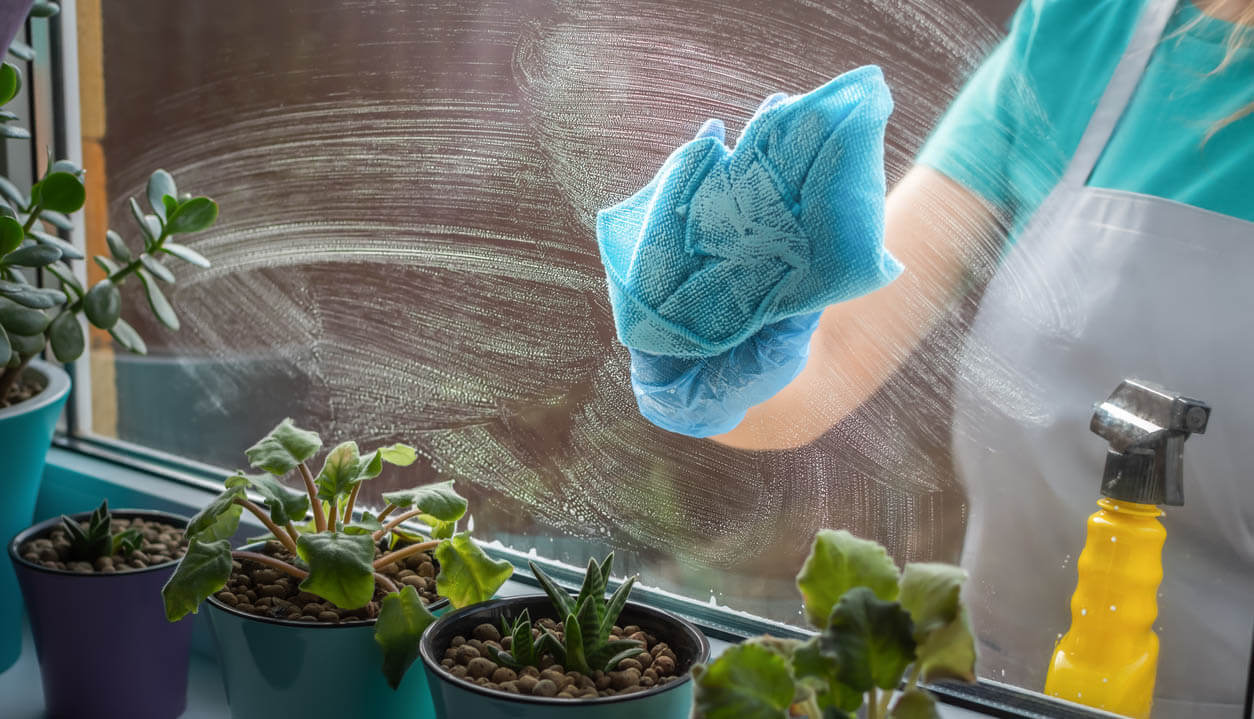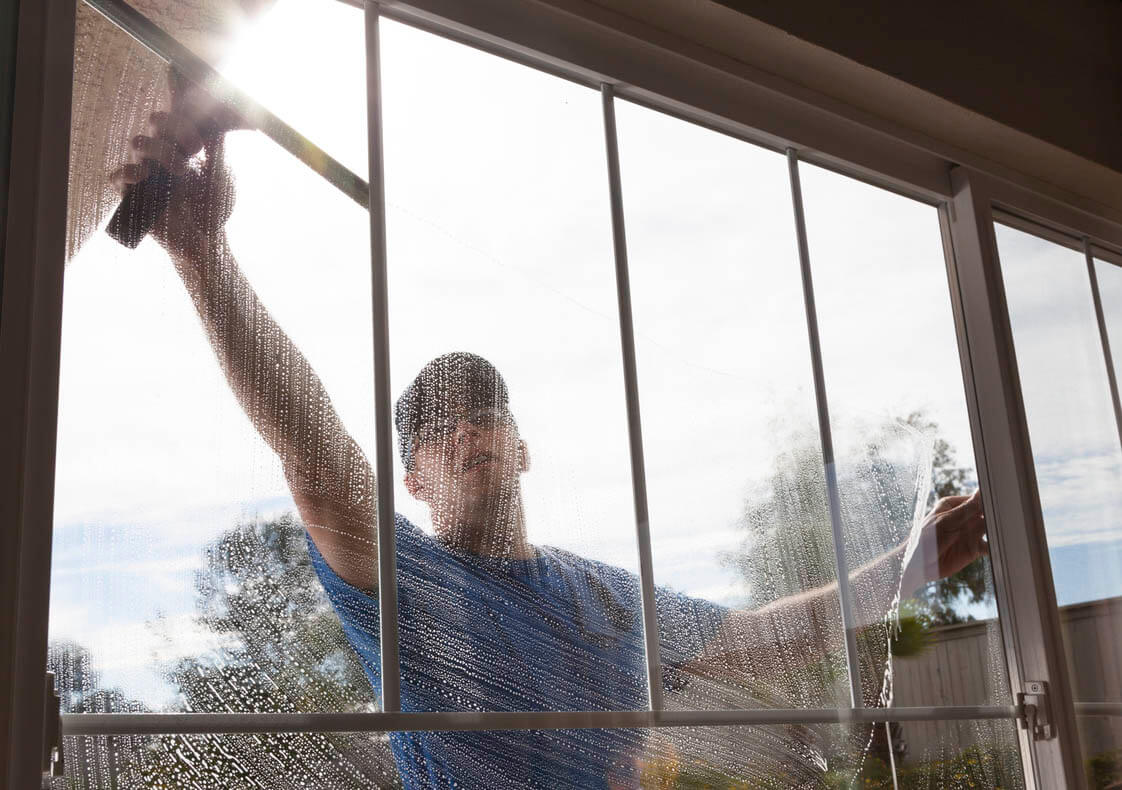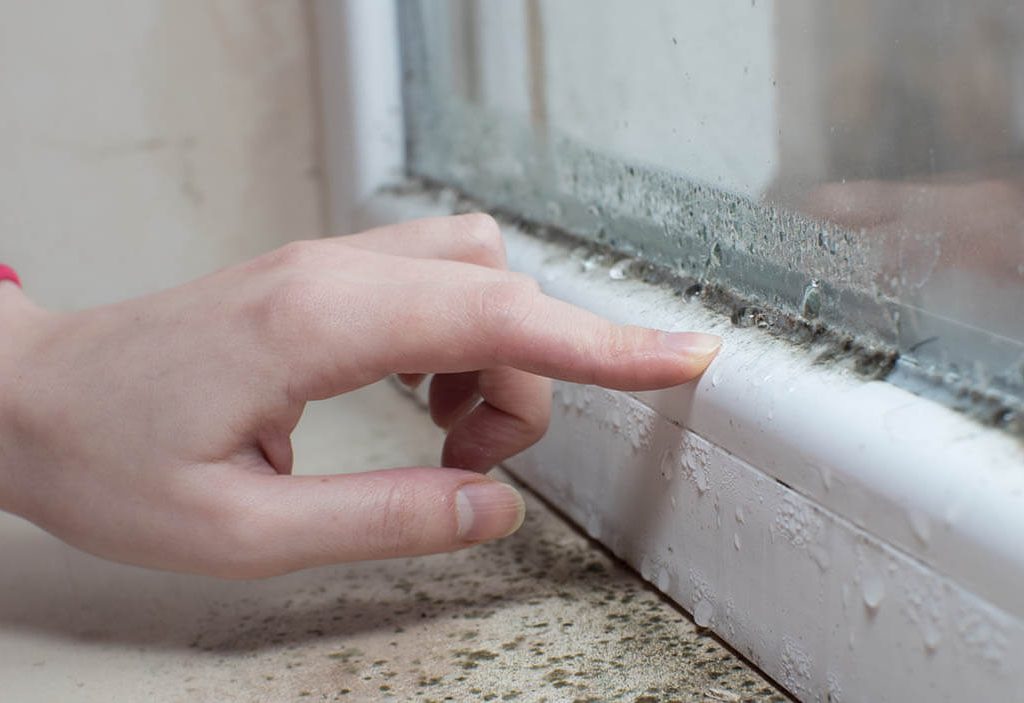Mold thrives in moist environments. If you live somewhere with damp or humid winters, you probably know how easily condensation forms on your windows. That excess moisture becomes the perfect spot for mold to grow around window sills, bathroom corners, and even inside closets.
While it’s important to keep your windows streak-free, it’s also worth paying attention to whether mold is starting to build up in places you don’t usually notice.
Mold not only looks unpleasant, but letting it build up over time can create serious indoor air quality problems and even trigger allergic reactions. This blog will walk you through how to spot signs of mold, common causes of why it forms, how to get rid of mold on window sills, and preventive tips to ensure that it doesn’t come back.
How to Spot Signs of Mold Around Window Sills
Mold can have significantly negative effects on your home and your health. Unfortunately, for most homeowners, they don’t notice the warning signs until it’s too late. Here are some ways to catch mold early to avoid expensive repairs and long-term damage to your home:
- Discoloration or Stains: Black, green, brown, or even white fuzzy spots or streaks along the window sill or frame typically point to active mold growth that needs immediate attention.
- Musty or Earthy Smell: Mold releases compounds that create a damp, stale smell. If left unchecked, this odor can spread through your home.
- Peeling or Bubbling Paint: Moisture trapped beneath the paint can cause it to bubble or peel, especially around the window frame. This can be a sign of mold forming underneath the surface, particularly in older wooden sills.
- Soft or Warped Wood: If the wood feels soft to the touch or looks warped, it could mean the mold has already penetrated deeper into the material.
- Increased Allergy Symptoms Indoors: If you or your family experience frequent sneezing, coughing, itchy eyes, or nasal congestion that seems worse near certain windows, hidden mold could be the cause. Mold spores can trigger allergic reactions, even if the growth isn’t visibly large.
- Black Dust or Powder That Reappears After Cleaning: Some types of mold look like fine black dust. If you’ve wiped it away and it keeps coming back in the same spot, it’s likely mold rather than regular dirt or debris.
Common Causes of Mold on Window Sills & How to Prevent It from Returning
Knowing what causes the mold on your window sills allows you to better understand where the moisture is coming from, helping you take preventive steps before mold becomes a recurring problem. Here are the primary reasons mold may be forming on your window sills, and practical ways to prevent it from coming back:
1. Excess Condensation
When warm indoor air meets the cold surface of a window, it creates condensation. This moisture often settles on the sill.
???? How to prevent it: Use a dehumidifier and keep your blinds open during the day. Ensuring your space is well-ventilated is key to balancing humidity, which helps prevent mols from forming.
2. Leaky Windows or Worn-Out Seals
Cracks in the window frame or damaged caulking can let water seep in from outside. The sill stays damp, and mold takes hold quickly.
???? How to prevent it: Inspect window frames regularly for gaps, and reseal or caulk any visible cracks.
3. Indoor Plants Sitting on the Sill
Plants release moisture into the air through a process called transpiration. If they sit too close to the window, that added humidity can lead to mold.
???? How to prevent it: Avoid placing plants directly on the window sill or wipe the area frequently to keep it dry.
4. Skipping Regular Cleaning
Dirt and dust trap moisture. If you’re not cleaning your sills regularly, they can become a breeding ground for mold spores.
???? How to prevent it: It’s important to regularly clean mold from window frames. Wipe down sills weekly with a cloth and use a mild cleaning solution like vinegar or hydrogen peroxide.
Safe & Effective Ways to Clean Mold From Window Frames

If the mold on your window sill is still mild and hasn’t spread beyond the surface, it’s possible to treat it yourself using basic household supplies and safe cleaning techniques. Below are some practical, effective methods you can try before calling in a professional:
- Wear protective gear: Before you begin, equip yourself with gloves, a mask, and safety goggles. Mold spores can be harmful when inhaled or when they come into contact with skin, so proper protection is essential.
- Ensure proper ventilation: Keep the space well-ventilated during the cleaning process. Open windows or use a fan to circulate fresh air and help reduce airborne spores.
- Apply white vinegar to affected areas: Spray undiluted white vinegar directly onto the mold. Allow it to sit for 30 to 60 minutes to break down the mold before gently scrubbing the surface with a soft brush or cloth.
- Use a baking soda paste for persistent mold: For areas with stubborn mold, create a paste using baking soda and water. Apply the mixture, scrub lightly, and rinse thoroughly. Baking soda not only removes mold but also helps neutralize odors and prevent regrowth.
- Wipe clean and dry the surface thoroughly: After cleaning, remove all residue with a clean, dry cloth. Make sure the window frame is completely dry to eliminate the moisture that mold needs to return.
- Avoid harsh chemicals unless necessary: Bleach is not always the best solution. It can damage window materials and may not effectively treat mold on porous surfaces like wood. Stick with gentler options unless dealing with widespread contamination.
- Inspect the area regularly: Keep an eye on the cleaned surface over the next few days. If mold returns or spreads beyond the original spot, this may indicate a deeper moisture issue that requires professional attention.
The Limits of DIY Mold Cleaning and When to Seek Expert Help

While DIY treatments provide a temporary fix, most of the time, they are not enough in addressing the underlying causes of mold growth. The best way to fully remove mold around your window sills is by calling in a professional who can thoroughly inspect your window sill and clean it carefully and completely to ensure the issue doesn’t return.
At Winducks, we offer full-service window cleaning that covers everything from glass and screens to tracks and frames, ensuring every part of your window is cleaned thoroughly. Using specialized carbon fibre water-fed poles and a four-stage filtration system, we remove the dirt and moisture that DIY cleaning often misses. By choosing Winducks, you’re investing in a long-term solution that helps protect your home from recurring mold issues.




